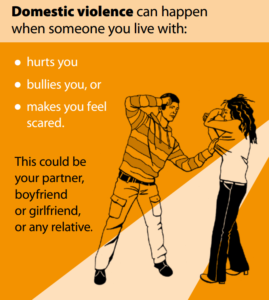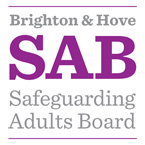Types of Abuse & Neglect
The Care Act 2014 lists ten specific categories of abuse and neglect. These are; neglect, self-neglect, physical abuse, sexual abuse, psychological or emotional abuse, financial and material abuse, organisational abuse, discriminatory abuse, modern slavery and domestic abuse.
You can find further information on each of these ten categories below, including possible signs and indicators abuse or neglect is occurring.
Incidents of abuse may be one off single acts, multiple acts, or an act of neglect or a failure to act. These may affect one person or more than one person and it is vital to consider the risk to others. Professionals and others should look beyond single incidents or individuals, to identify patterns of harm or behaviour, as the Care Quality Commission, as the regulator of service quality, does when it looks at the quality of care in health and care services. Repeated instances of poor care may be an indication of more serious problems and could constitute organisational abuse.
Abuse can take place in any location including people’s own homes, a relative or friend’s home, residential or day centres, Care Homes, hospitals, supported accommodation, educational settings, work settings, clinics or prisons. It can take place when people live alone or live with others and can also occur through the use of technology such as mobile telephones, social networking sites, fraudulent websites, and emails.
Abuse can occur in any relationship and perpetrators of abuse may include; a member of staff, owner or manager at a residential or nursing home, a professional worker such as a carer, nurse, social worker, or general practitioner (GP), a volunteer or member of a ‘community group’ such as a social club or place of worship, another service user, a spouse, partner, relative or friend, an informal carer, a neighbour, local resident, member of the public or a stranger, or a person who deliberately targets adults they perceive as vulnerable in order to exploit them.
For further guidance in situations where abuse or neglect involves someone working or volunteering in a position of trust please see the guidance on Positions of Trust – Brighton SAB (bhsab.org.uk)
An ongoing failure to meet someone’s basic physical or psychological needs.
Neglect and acts of omission include ignoring medical, emotional or physical care needs, failure to provide access to appropriate health, care and support or educational services, the withholding of the necessities of life, such as medication, adequate nutrition and heating.
Possible signs and indicators of neglect may include:
- Physical condition of person is poor e.g. bed sores, unwashed, ulcers, personal hygiene
- Clothing in poor condition e.g. unclean, wet, ragged
- Inadequate physical environment, inadequate protection from sun, inadequate heating
- Malnutrition, dehydration, inadequate diet
- Untreated injures or medical problems
- Inconsistent or reluctant contact with health or social care agencies
- Failure to engage in social interaction / give prescribed medication
A person living in a way that puts their health, safety, or wellbeing at risk.
Self-neglect differs from other forms of abuse because it does not involve a perpetrator. However, it is identified as a specific category of abuse and neglect in the Care Act 2014.
It is when a person is unable, or unwilling, to care for their own essential needs and covers a wide range of behaviour including neglecting to care for one’s personal hygiene, health or surroundings, refusing care and support, and severe hoarding behaviour.
Possible signs and indicators of self neglect may include:
- Living in a very unclean environment e.g. rodent infested or blocked toilet
- Neglecting household maintenance
- Having eccentric behaviour or lifestyles such as obsessive hoarding
- Poor diet and nutrition, little or no fresh food in fridge, mouldy or out of date food
- Refusing necessary help from health or social care staff in relation to personal hygiene and care
- Having poor personal hygiene, poor health, sores or long toe nails
The act of causing physical injury to someone else.
Physical abuse includes assault, hitting, slapping, pushing, misuse of medication restraint or inappropriate physical sanctions.
Possible signs and indicators of physical abuse may include:
- Any injury not fully explained by the history given
- Injuries inconsistent with the lifestyle of the adult
- Bruises and/or welts on face, lips, mouth, torso, arms, back, buttocks, thighs
- Clusters of injuries forming regular patterns
- Burns, especially on soles, palms or back: friction burns, rope or electrical appliance burns
- Multiple fractures, bleeding, slap marks, finger marks
- Lacerations or abrasions to mouth, lips, gums, eyes, genitalia
- Injuries at different stages of healing
- Medication misuse
- Fear or emotional distress.

When an adult is forced or persuaded to take part in sexual activities when they do not or cannot consent to this.
Sexual abuse includes rape, indecent exposure, sexual harassment, inappropriate looking or touching, sexual teasing or innuendo, sexual photography, subjection to pornography or witnessing sexual acts, indecent exposure and sexual assault or sexual acts to which the adult has not consented or was pressured into consenting.
Possible signs and indicators of sexual abuse may include:
- Significant change in sexual behaviour or attitude
- Pregnancy in a woman who is unable to consent to sexual intercourse
- Wetting or soiling
- Poor concentration, withdrawn. depressed or stressed
- Unusual difficulty in walking or sitting
- Torn, stained or bloody underclothing
- Bruises, bleeding, pain or itching in genital area
- Sexually transmitted diseases, urinary tract or vaginal infection, love bites
- Bruising to thighs, upper arm,
- Self harming behavior, fear or emotional distress
Sexual Abuse Referral Centre (SARC)
The Saturn Centre SARC offers free support and practical help to anyone in Sussex who has experienced sexual abuse. More information and contact details are available at www.saturncentre.org
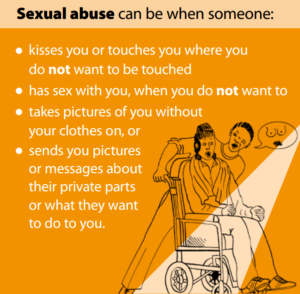
Ongoing psychological or emotional maltreatment.
Types of psychological or emotional abuse can include:
- Enforced social isolation – preventing someone accessing services, educational and social opportunities and seeing friends
- Removing mobility or communication aids or intentionally leaving someone unattended when they need assistance
- Preventing someone from meeting their religious and cultural needs
- Preventing the expression of choice and opinion. Controlling behaviour
- Failure to respect privacy
- Preventing stimulation, meaningful occupation or activities
- Intimidation, coercion, harassment, use of threats, humiliation, bullying, swearing or verbal abuse
- Addressing a person in a patronising or infantilising way
- Threats of harm or abandonment
- Cyber bullying
- Blaming
- Verbal abuse
Possible signs and indicators of psychological or emotional abuse may include:
- An air of silence when a particular person is present
- Withdrawal or change in the psychological state of the person
- Insomnia
- Low self-esteem
- Uncooperative and aggressive behaviour
- A change of appetite, weight loss/gain
- Signs of distress: tearfulness, anger
- Apparent false claims, by someone involved with the person, to attract unnecessary treatment
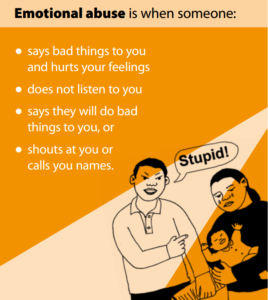
The unauthorised and improper use of funds, property, or any resources. This includes the use of theft, coercion, or fraud to obtain or try to obtain a person’s money, possessions, or property.
Financial or material abuse includes theft, fraud, internet scamming, coercion in relation to an adult’s financial affairs or arrangements, in connection with wills, property, inheritance or financial transactions, or the misuse or misappropriation of property, possessions or benefits.
Possible signs and indicators of financial or material abuse may include:
- Change in living conditions
- lack of heating, clothing or food
- Inability to pay bills or unexplained shortage or money
- Unexplained withdrawals from an account
- Unexplained loss or misplacement of financial documents
- The recent addition of authorised signatories on a client’s signature card
- Sudden or unexpected changes in a will or other financial documents
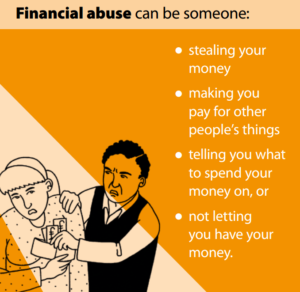
Neglect or poor professional practice or incidents due to the structure, policies, processes, or practices within an organisation, resulting in ongoing neglect or poor care.
Organisational abuse is neglect and poor care practice within an institution or specific care setting such as a hospital or care home, for example, or in relation to care provided in one’s own home. This may range from one off incidents to on-going ill-treatment.
Possible signs and indicators of organisational abuse may include:
- Misuse of medication / inappropriate restraint methods
- Sensory deprivation e.g. denial of use of spectacles, hearing aids / denial of visitors or phone calls
- Restricted access to toilet or bathing facilities, medical or social care, lack of clothing or possessions
- Controlling relationships between staff and service users
- Poor professional practice, poor communication and recording of essential care information
- Lack of respect shown to person
- Failure to ensure privacy, personal dignity
- Lack of flexibility and choice
- Insufficient account taken of views of adult, relatives or carers
- Significant numbers of low level concerns
Ill-treatment experienced by people based on age, disability, gender, gender reassignment, marriage /civil partnership, pregnancy, maternity, race, religion and belief, sex, or sexual orientation.
This is any form of abuse which is carried out because of a person’s differences and includes forms of harassment, ill-treatment, threats or insults because of a person’s race, age, culture, gender, gender identity, religion, sexuality, physical or learning disability, or mental-health needs.
Possible signs and indicators of discriminatory abuse may include:
- The person appearing withdrawn and isolated
- Expressions of anger, frustration, fear or anxiety
- Lack of respect shown to an individual
- Signs of a sub-standard service being offered to a person
- Repeated exclusion from rights afforded to citizens such as health, education, employment
Discriminatory abuse can also be called ‘hate crime’. Hate crime is the targeting of individuals, groups and communities because of who they are. It is any incident which is a criminal offence and which is thought, by you or someone else, to be motivated by a hostility or prejudice based on race, ethnicity, religious beliefs, gender, gender identity, disability, age, sexual orientation or any other actual or seeming difference.
This can include:
- Threats, bullying or intimidation
- Threatening or offensive mail, texts or emails
- Verbal abuse
- Damage to property
- Physical assaults
It is important to report all hate incidents, even if you think nothing can be done as it helps the police and other agencies identify areas of concern, patterns of behaviour and what is happening in our communities. Hate crimes are not only crimes against the targeted victim, but also against a particular group as a whole.

Holding a person(s) in position of slavery, forced servitude, compulsory labour, or facilitating their travel with intention of exploiting them.
Modern slavery exists in the UK and destroys lives. Men, women and children – UK nationals and those from abroad – are exploited in the sex industry, through forced labour, domestic servitude in the home and forced criminal activity.
These types of crime are often called human trafficking.Traffickers and slave masters use whatever means they have at their disposal to coerce, deceive and force individuals into a life of abuse, servitude and inhumane treatment.
The true extent and nature of modern slavery in Sussex is not known as this crime remains largely invisible to the general public unless they know what they are looking for.
Possible signs and indicators of modern slavery may include:
- Victims may show signs of physical or psychological abuse, look malnourished, unkempt, withdrawn
- May seem under control of others, not travel alone, rarely interact or appear unfamiliar with the neighbourhood
- May be living in dirty cramped conditions
- May have no identification documents, few personal possessions, wear the same clothes everyday
- May have to be dropped off or picked up for work on a regular basis either very early or late at night
- May appear frightened or hesitant to talk, avoid eye contact
Government guidance on Victims of Modern Slavery is designed to help staff identify and help potential victims of modern slavery (including human trafficking) in England and Wales. It reflects relevant provisions of the Modern Slavery Act 2015 and the Human Trafficking and Exploitation (Criminal Justice and Support for Victims) Act (Northern Ireland) 2015. If staff suspect a person is a potential victim of modern slavery due to human trafficking in any part of the UK (or slavery, servitude, or forced or compulsory labour in cases identified in England or Wales) they must consider a referral into the national referral mechanism (NRM). Under the NRM, a trained specialist in a designated competent authority will investigate the matter further.

Any incident of domestic abuse by people aged 16 or over who are personally connected. This can include physical or sexual abuse; violent or threatening behaviour; controlling or coercive behaviour; economic, psychological, or emotional abuse.
Domestic abuse is often characterised as physical violence but can include psychological, physical, sexual, financial or emotional abuse, by someone who is a family member or is, or has been, in a close relationship with the person being abused.
This may be a one-off incident or a pattern of incidents or threats, violence, controlling or coercive behaviour. It also includes so called ‘honour’ based violence, being forced to marry, or undergo genital mutilation.
Coercive or controlling behaviour is a core part of domestic violence. Coercive behaviour can include:
- Acts of assault, threats, humiliation and intimidation
- Harming, punishing, or frightening the person
- Isolating the person from sources of support
- Exploitation of resources or money
- Preventing the person from escaping abuse
- Regulating everyday behaviour
Possible signs and indicators of domestic abuse may include:
- Low self-esteem
- Feeling that the abuse is their fault when it is not
- Physical evidence of violence such as bruising, cuts, broken bones
- Verbal abuse and humiliation in front of others
- Fear of outside intervention
- Damage to home or property
- Isolation – not seeing friends and family
- Limited access to money
